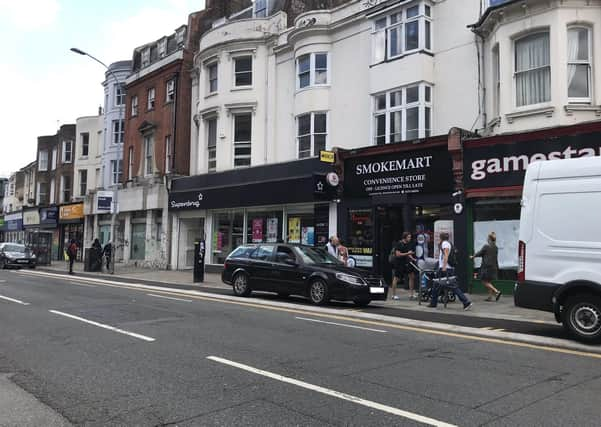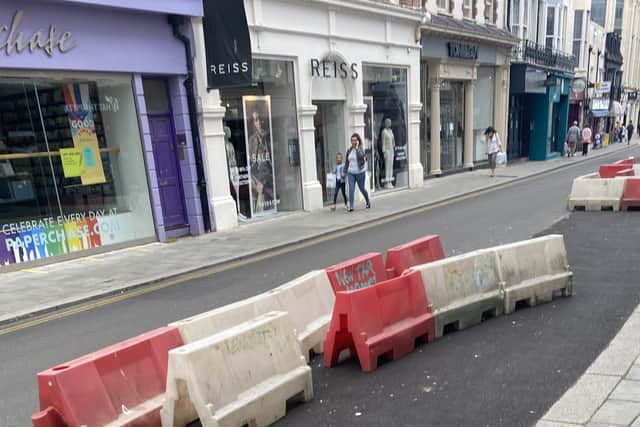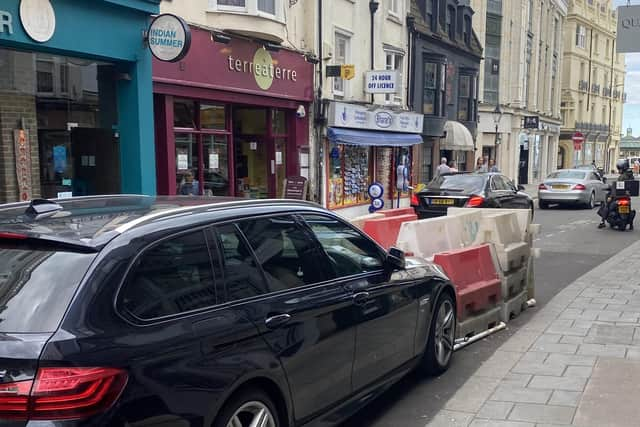Parked cars on city pavements widened for social distancing


Pavements were widened in June as part of the government-led programme, were ready for when more shops started reopening across the country.
In Brighton, wider pavements in Middle Street, Duke Street, Ship Street, Prince Albert Street and East Street in the Lanes and along London Road and St James’s Street.
Advertisement
Hide AdAdvertisement
Hide AdEast Street is also a pedestrian zone from 11am to 7pm Saturday and Sunday.


Green councillor Tom Druitt was contacted by a resident who shared photographs of barriers used to mark out the wider pavements moved out of the way parked cars on 27 June.
During the last weekend, drivers ignored the 11am road closure, and the social distancing barriers were “in pieces”.
The wider pavement area was full of signs, tables and chairs, which still require a highway licence, even though city councillors have agreed these should be free during the pandemic period.
Advertisement
Hide AdAdvertisement
Hide AdCouncillor Druitt said: “The issue in East Street is not just anti-social parking restricting social distancing, it’s anti-social parking plus A-boards on narrow pavements, meaning wheelchair access is impossible.


Green councillor for Preston Park ward, Siriol Hugh-Jones was shocked to find vehicles parked up on the new wide pavements in London Road, on Friday 10 July.
She said: “Despite social-distancing restrictions becoming more relaxed, it is still advisable that we maintain a distance from those around us, for everyone’s protection and to restrict the burden on the NHS.
“The council has successfully applied for government funding for temporary measures to create more space for pedestrians and cyclists to move around the city safely.
Advertisement
Hide AdAdvertisement
Hide Ad“But the protections afforded by these measures are completely undermined when drivers simply use the expanded pavements as off-street parking.”
The city council received £663,000 from the Department of Transport’s Urgency Response Transport Action Plan, to pay for various temporary measures to improve “active travel” ie walking and cycling in the city.